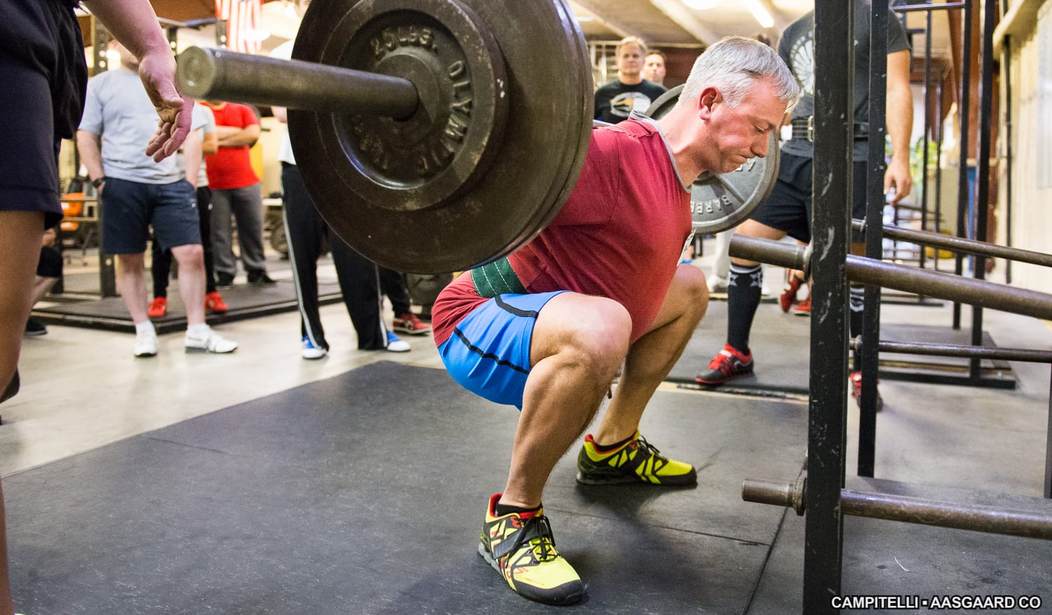So you’ve finally decided to Be Somebody and start a strength training program. Not a machine-based health spa/corporate gym exercise plan with leg extensions, treadmills, and three-pound dumbbells, but real strength training involving barbells, basic full range of motion movements, and regular incremental increases in load that drive an actual increase in strength. You may decide to hire a coach to show you how to use the exercises correctly, you’re going to train three days a week, and you’re going to increase the weight on all the exercises a little bit every time you do them.
What will happen during the first two weeks of this program? More than you will probably expect.
First — let’s get this out of the way — you will be sore. Your muscles will be sore, a little, for a few days. This will mostly stop after the third workout, and it’s a natural consequence of using your muscles in ways they haven’t been used before. Specifically, the eccentric component of the work — the lowering-phase of the movement pattern, where the muscles get longer as the weight is lowered — is the source of this soreness. This soreness is not what’s making you stronger, it is just a side effect of doing the work that does make you stronger.
If the soreness is excessive, you have done something wrong. For example, if your joints are sore, you have performed the exercise incorrectly — you have placed your joints in positions they are not designed to be in. Your technique was wrong, and it must be corrected. One of the advantages of barbell training is that the exercises can be performed correctly according to your individual proportions (your anthropometry), a factor that cannot be controlled for using machines. The down-side is that they can also be performed incorrectly, since you are in complete control of the barbell’s movement. If your knees, shoulders, elbows, or hips are sore, you did something wrong. That’s okay, you haven’t crippled yourself. Just correct it next time.
If your muscles are so badly sore that you can’t move, you did too much in the previous workout — either you did too many reps (the most common problem) or too much weight. Too many reps add up to too much eccentric work, to which you are not yet adapted. The recommended number of reps is five and the recommended number of sets is no more than three, for a very good reason. And too large a jump in weight will overwhelm your ability to correctly perform the movement, placing you in an incorrect position under the load. If your eyes get bigger than your stomach in this particular case, you will be in a lot of pain for a few days. Don’t do this. Stick with the program.
Muscle soreness is an inflammatory response to the muscle damage, and if it is excessive an over-the-counter NSAID like ibuprofen or naproxen can be useful for a few days. Likewise, muscle growth is one of the primary reasons for strength training, and this is facilitated by sufficient dietary protein, over and above what you’re probably already eating. The idea that you don’t need more protein when you train for strength is just not true. If your protein intake is low, your recovery will be slower and you will be sore longer. Eat more protein.
Next, you will be getting stronger. Strength is the ability to produce force, and since you are adding weight every workout, you will be getting stronger because you are intentionally forcing this adaptation. This is the whole point of the process, and it’s the difference between effective training and merely exercising — you must understand the importance of increasing the load you lift every workout.
Over a two-week period, it is perfectly normal for a young man to add 50 pounds to his squat, and more than that to his deadlift. Older guys and women will experience comparable increases, though not as robust due to their differing hormonal environments. The numbers you record in your training log will attest to this, and you will notice the difference in your daily activities. Enjoy it — you earned it.
And depending on your age, sex, and initial body composition, you will be gaining bodyweight. Underweight young men who undertake a strength program to get bigger should see a bodyweight increase of 10 pounds within the first two weeks — IF you’re eating enough. In fact, if a skinny guy’s bodyweight does not go up 10 pounds in two weeks, he’s not doing the eating part of the program correctly. Most of this bodyweight increase will be muscle, perhaps 80% of it. I’ve been coaching strength for 40 years, and I know this to be true: for an underweight young guy, muscle growth on a correctly designed barbell program is immediate and dramatic, IF you do the program correctly.
For an overweight guy or most females, bodyweight changes will be less dramatic. They don’t actively try to gain weight because they don’t need to or want to. A young man needs a large caloric surplus to get bigger — people who don’t want to get bigger don’t eat as much. Duh. Muscle mass will increase as strength increases, but more slowly and as bodyfat decreases at the same time. After two weeks, an overweight guy will notice his pants waist fitting looser — not dramatically, but enough to notice.
After two weeks on an effective strength program, people of normal body composition will display more muscle mass. This will appear as larger muscles above the knees, a change in the appearance of the legs, arms, and shoulders, and more prominent chest muscles. Look closely and you’ll see it. It’s noticeable, even if it’s not dramatic, and it is proof that the previous two weeks have been productive.
You should be sleeping better. Your appetite will have increased, and you should eat more and better food in response. You posture will have improved, probably without your noticing it. Your gait will be more positive, and your physical presentation will be better than before you started. These are all good things, and they happen within the short span of two weeks — six workouts. If you approach the process correctly. Try it and see for yourself.









Join the conversation as a VIP Member